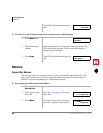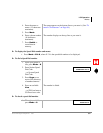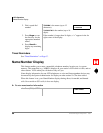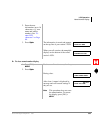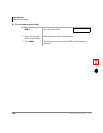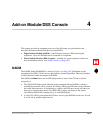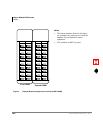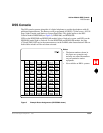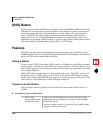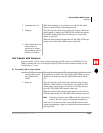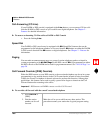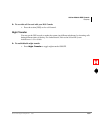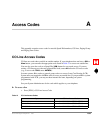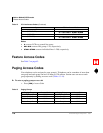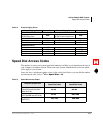
104 Strata DK Digital Telephone 5/99
Add-on Module/DSS Console
[DSS] Button
[DSS] Button
The Direct Station Select [DSS] button can appear on both the DADM and DSS Console. Each
DSS button is associated with a particular station in your telephone system. It can be used to
transfer an outside call to the associated station or to make a direct call to the associated
station. The [DSS] LED lights steady red when the station associated with the [DSS] is
ringing, busy on a call, or in the DND mode; or when the associated station is idle, but all
appearances of the station’s [PDN] are busy or in-use by other stations. [DSS] buttons cannot
call station [PhDNs], Distributed Hunt Group [DNs], or ACD Groups.
Features
The LED color indications described in these feature descriptions apply specifically to the
DADM and DSS Console models DDSS2060 and DDSS1060. Flash conditions described here
apply to all DSS console models and the DADM.
Calling a Station
To call a station’s [PDN] from either a DSS console or a DADM, press the [DSS] associated
with the station. A station call with a [DSS] can be made on-hook or off-hook, and with Voice
First or Tone signaling. After pressing the button, treat the call like any other station call made
from a digital telephone.
[DSS] LEDs indicate whether the associated station is idle or busy. The LED is steady red if
the station is busy or ringing, and is not lit if idle. If all the station’s PDN buttons are being
used by other stations, the DSS LED of the station is lit steady red, but the station may be idle.
If the station is in the DND mode, its DSS LED lights steady red.
Transfer to an Idle Station
You can transfer internal or outside calls to an idle station from either a DSS console or a
DADM.
➤ To transfer a call to an idle station
1. Press [DSS]
corresponding to the
station to be called.
The call is placed automatically on hold. The Line or [DN]
LED flashes green at double the on-hold rate, and the [DSS]
LED flashes green.
You hear a single-ring tone. (If using the Tone signaling mode,
you hear successive ring tones.)



